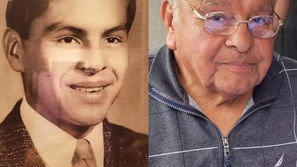Next stop: Alpha Centauri
- Jim Glynn
- Aug 27, 2016
- 4 min read
“Second star to the right, and straight on ‘‘til morning…” — J.M. Barrie, “Peter Pan” Fifty-four years ago today, the United States launched the Atlas-Agena rocket. Liftoff occurred a few minutes before 2 a.m. on August 27, 1962, at Cape Canaveral. Atop the rocket, scientists fixed the Mariner 2 space probe, a craft that was intended to travel 180 million miles. It was the first successful attempt to send a vehicle past Venus.
During its nearly four-month odyssey, it made scientific measurements of interplanetary dust and various observations of significant interest. Among these were notations of conditions on our sister planet, an orb whose surface is about 800 degrees Fahrenheit, due in part to the greenhouse effect of a carbon- dioxide atmosphere.
A decade after the Mariner 2 project, President John F. Kennedy promised to put a man on the moon by the end of the 1960s. That seemed ambitious, to say the least, and many people saw the suggestion as a blatant boast for a second term in office. But, on July 20, 1969, Neil Armstrong set foot on the lunar surface, proclaiming, “That’s one small step for (a) man; one giant leap for mankind.” Mars and beyond
America’s Viking probes, in 1976, made the first successful soft landing on Mars. The Viking 1 orbiter sent back photographs that were helpful in developing a map of the planet’s surface and selecting a landing site for Viking 2. A couple of decades later, the Mars Pathfinder returned 16,500 images and 15 chemical analyses of rocks and soil.
As we entered the twenty-first century, scientists got serious about sending a craft to Pluto (once considered to be a planet furthest from the Earth and the Sun). Finally, on Jan. 19, 2006, New Horizons was launched with an Earth-and-solar escape speed of more than 36,000 miles per hour. It drew near Jupiter thirteen months later, sending back information about the planet’s moons and atmosphere.
On Jan. 15, 2015, almost nine years after it left Cape Canaveral, it began its approach to Pluto from roughly 200 million miles away. Six months later, it flew 7,800 miles above the dwarf planet’s surface, sending a plethora of information back to Earth scientists. In fact, it was estimated that it would take 16 months to complete the download. Analysis of that data will take even longer. Today, New Horizons is heading in the direction of the constellation of Sagittarius, and it is less than 5 light-hours away from Earth. Alpha Centauri
I’ve lingered on this brief history of our adventures in space to illustrate just how ridiculous it is to imagine that human beings will ever travel to Alpha Centauri, the closest star system to Earth. As stated above, New Horizon is less than five light-hours from us; that’s 3.4 billion miles. Alpha Centauri is 4.37 light years away, close to 25.7 trillion miles, and the trip would take 350,000 years using our current technology (or 472 googlian centuries by California High Speed Rail*).
According to Mathew Turner, writing for Inquisitr, this may be our next destination. He states, “Obviously, this isn’t a reality yet, but after two big announcements (in June, 2015), travel to the far reaches of the Milky Way not only moves closer to the realm of possibility, but the incentive to make it happen has exponentially grown.” One reason for this incentive is found in a paper (“Warp Field Mechanics 101,” NASA Johnson Space Center, 2101 NASA Parkway, Houston, TX 77058) written by Dr. Harold “Sonny” White.
In reviewing White’s treatise, Clara Moskowitz (Assistant managing editor of Space.com) concludes, “A warp drive to achieve faster-than-light travel — a concept popularized in television’s Star Trek — may not be as unrealistic as once thought ...” In fact, the idea springs from a paper written in 1994 by Mexican physicist Miguel Alcubierre. But, other scientists insisted that his proposed device would require unimaginable amounts of energy.
White’s paper, based on Alcubierre’s calculations, suggests that such a warp drive “would involve a football-shape spacecraft attached to a large ring encircling it. This ring, potentially made of exotic matter, would cause space-time to warp around the starship, creating a region of contracted space in front of it and expanded space behind.” Richard Obousy, president of Icarus Interstellar, adds, “…the really cool thing is (that) space-time, the fabric of space, is not limited by the speed of light.” If this is true, Moskowitz says that a spacecraft could achieve warp speed, traveling at ten times the speed of light.
In the near past, velocity beyond the speed of light would have required “a minimum amount of energy about equal to the mass-energy of the planet Jupiter,” according to Moskowitz. However, White’s calculations show that, if the ring encircling the spacecraft were adjusted to a rounded donut, instead of a flat ring, the warp drive could be powered by the same mass as used by the Voyager 1 probe that was launched by NASA in 1977. And, the trip would take about two weeks! Finding other life
Being able to travel to Alpha Centauri is probably only valuable symbolically because the true mission of scientists seems to be the possibility to contact other life. Astronomers developed a test, called the Biological Complexity Index (BCI) based on several factors, such as a planet’s density, chemistry, distance from its star, and age. These sub-indices show a planet’s capability of supporting life, as we know it.
Scientists at Cornell University examined 637 exo-planets and concluded that one, named Gliese 581c, actually scores higher than Earth on the BCI scale. Turner writes, “This means that if a technologically advanced civilization were observing both Earth and Gliese 581c from far away (and using the same formula for their calculations), they would place their bets on traveling to Gliese 581c to look for complex life as opposed to Earth.” But Gliese 581c is twenty light years away, nearly 5 times further than Alpha Centauri.
If White is correct in speculating that it would take two weeks at warp speed to reach Alpha Centauri, then we’re talking about a mere two-and-a-half-month cruise to our closest neighbors. “All the world is made of faith, and trust, and pixie dust.” — J.M. Barrie,, “Peter Pan”
• • •
(*smart-alecky editorial comment; please disregard)
• • •
Jim Glynn, who is so fed up with airport security procedures that he won’t even fly any more and also can‘t resist taking potshots at CHSR, can be contacted at j_glynn@att.net.


























Comments